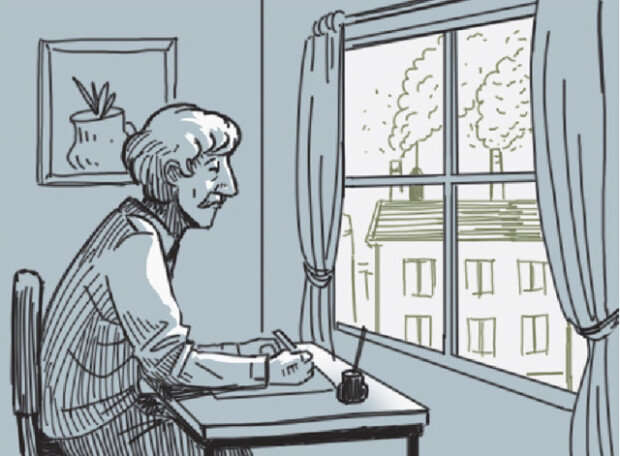Masterpiece created by extreme weather
Masterpiece created by extreme weather
Posted February. 01, 2020 07:58,
Updated February. 03, 2020 07:58

The 19th century was laden with extreme weather events. The 1815 eruption of Mount Tambora was caused by mother nature, but most of the events were caused by the smog from the industrial revolution. The weather aggravated due to the smoke that came out of factory chimneys after the mid-19th century. England regulated emissions for the first time in 1853, which means air contamination due to industrial development was already serious in the 1850s.
Great Exhibition, the first international exhibition, was held in London in 1851. The gigantic Crystal Palace, which was built from steel frames and glass, presented industrial products, the shiny achievement of the industrial revolution. On the other side of it, however, was the pain of London citizens ingrained with pollution. Through his novel “Bleak House,” British author Charles Dickens disclosed the suffocating environment and miserable reality of slums behind the achievement of the industrial revolution. The theme of the exhibition was “progress,” which came from conviction on progress and limitless ability of humans. But the “progress,” which meant human dominance on nature, turned out to be reckless destruction of nature.
The smog covering the sky of England caused climate change, which was why harvested crops rotted and infectious diseases broke out due to the pouring rain in every summer in the 1870s. According to a modern statistical data, the sulfur dioxide concentration in the atmosphere peaked in the 1880s. In his book “The Storm Cloud of the Nineteenth Century,” 65-year-old Jon Ruskin said in 1884 that the weather distinctively worsened compared to that in his youth. By thoroughly reviewing literature from ancient Greek Homer to George Gordon Byron, he found out that the dismal weather did not exist in the past. The British thinker left an ominous prophecy that the holy contract between nature and human will meet its doom.
South Korea is now suffering from the threat of climate change and fine dust 170 years after London's Great Exhibition of 1851. I hope horror fictions would not become the main genre of literature because of air pollution and bad weather. Ruskin’s prophecy should remain as a lesson from apocalyptic literature.
Headline News
- N. Korea launches cyberattacks on S. Korea's defense companies
- Major university hospital professors consider a day off each week
- Italy suffers from fiscal deficits from ‘Super Bonus’ scheme
- Inter Milan secures 20th Serie A title, surpassing AC Milan
- Ruling and opposition prioritize spending amid tax revenue shortfalls







